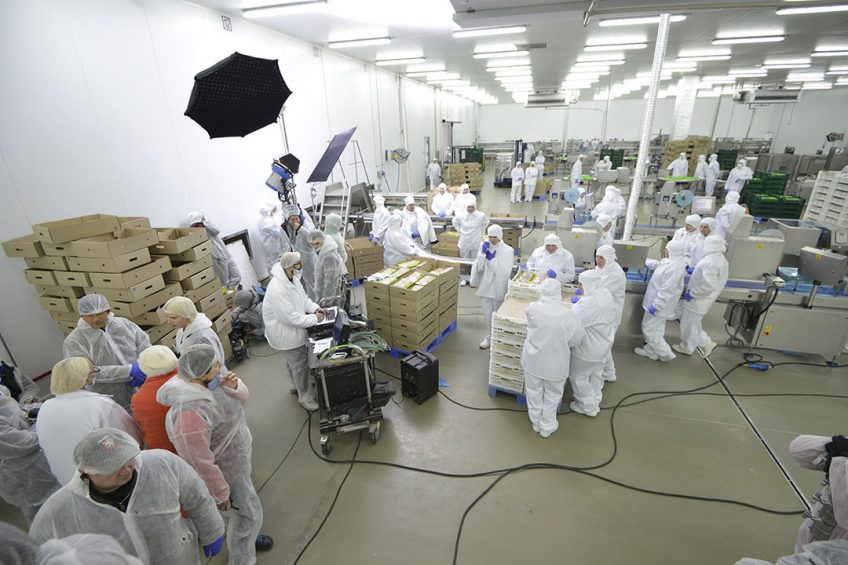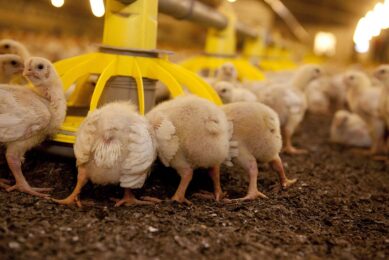Ukraine poultry poses no threat to EU producers

Broiler meat exports from Ukraine to the European Union (EU) have been seen soaring over the past few years, raising concerns that the future of European farmers comes a risk. However, new amendments to the Ukraine-EU trade deal are likely to curb export quantities and Ukrainian producers begin losing interest in the European market.
The terms of access of Ukraine poultry products to the EU market are set by the Deep and Comprehensive Free Trade Areas, or DCFTA. The trade deal gives Ukraine access to the European Single Market in selected sectors and grants EU investors in those sectors the same regulatory environment in the associated country as in the EU. The new amendments to that trade pact, that are yet to be approved by the European Parliament, envisage that Ukraine could be granted with an additional quota of 50,000 tonnes of broiler meat to the European Union free of duty, in exchange for closing a so-called “tariff loophole”. And those amendments are expected to be a game-changer.
Ukraine is now able to export 20,000 tonnes of chicken carcasses and an additional 20,000 metric tons of poultry meat, including chicken breast free of duty as part of its deal with the EU. This, however, is not concerning the in-bone chicken – the product with a low added value that at the time the DCFTA had been originally agreed upon was believed to be not of interest for Ukraine poultry exporters. However, Ukrainian poultry giant MHP discovered that it could export in-bone chicken breasts duty free to its European processing facilities, where the bone would be sliced out.
The company bought a meat-processing company in the Netherlands and increased the in-bone chicken exports to the EU from 3,500 tonnes in 2016 to 27,000 tonnes in 2017. All these exports fell in no tariff category and were exempt of duty or quantity restrictions. In the first 5 months of 2019, the Netherlands was the second biggest buyer of Ukraine poultry in the world after Saudi Arabia. The country alone imported 17,100 tonnes of poultry from Ukraine for $ 53 million, Ukraine Customs Service estimated.

In 2018, MHP closed a deal which purchased Slovenian poultry producer Perutnina Ptuj, presumably with the goal to further boost its export potential on the EU market. The rapid expansion prompted the European Commission into action, and the amendments to the DCFTA were designed as a compromise that would satisfy all involved.
No one wins
Opposed to EU’s expectations, the announcement about the new terms of the trade deal caused a criticism from all interested parties. “AVEC very much regrets that Ukrainian companies who have circumvented the provisions of the DCFTA and used a mechanism going against the spirit of this agreement will be rewarded with significant extra quantities. We deplore that our sector will have to pay for a Commission’s mistake,” European poultry farmers association AVEC said in a statement earlier this year. “Nevertheless, we understand the legal and geopolitical complexity of these negotiations and the sector will act responsibly in order to make sure that a solution to close that loophole will be found as soon as possible,” AVEC added.
For the Ukrainian poultry industry the proposed terms of DCFTA is a major achievement, but it would be good if the quotas would be higher. “This new volume [70,000 tonnes of duty-free poultry exports] is not enough. Nevertheless, we believe that this is a major achievement giving how the negotiations were taking place and what moods we have seen in the beginning,” commented Sergey Karpenko, chairman of the Ukraine poultry industry union. “The agreement should calm European poultry manufacturers down and ensure the sustainability and transparency of the EU poultry market. On the other hand it meets the rightful expectations of the Ukraine poultry companies in terms of exporting various poultry products to the members of the EU,” Mr Karpenko said. “Ukraine will have a better negotiating position in the next rounds of negotiations on the terms of DCFTA with the EU,” Mr Karpenko added.
A touch of xenophobia
In the past several months, MHP faced unprecedented criticism from some European newspapers, with a broad range of allegations and misinformation. MHP was accused of not adhering to common animal welfare standards, and taking advantage of state aid, the company was reportedly receiving thanks to ties in the Ukraine government. All these things are nothing, but “fake” and “misinformation”, according to MHP executives.

“There has certainly been a robust debate and a touch of xenophobia over the issues of Ukraine exports to the EU. And without question this whole issue has been overstated by vested interest lobby groups. To keep things in perspective, Ukraine exports only make up around 1% of the total EU poultry market. More poultry products in terms of volume, not price, are exported to Ukraine from the EU, a fact that is disregarded in any public statements,” commented Dr John Rich, chairman of the board of MHP. According to Dr Rich poultry production in Ukraine is finite. This means that production capacity is close to reaching maximum limits without a five-year capital expansion plan and massive investments. This clearly will not happen in the foreseeable future, so that means “that discussions on Ukraine exports flooding the EU poultry market are based on fallacy not fact.”
Also read: EU farmers fear new poultry market access
The chairman also stated that there was nothing special about the state aid to MHP, and the country has been adhering to the highest animal welfare standards, in spite of what was stated in some media reports. “Government support for agricultural industries is normal in most developing countries in the world and this support system is particularly robust in both the EU and USA. As a case in point, Ukraine uses a system of VAT rebates on capital expansion and growth of its agricultural industries, compared to direct subsidies to farmers which absorbs up to 40% of the EU budget,” Dr Rich said, adding that in the case of the UK farming industry, most farmers would cease production if subsidies were removed and due to food security and political issues, these subsidies form a part of the modus operandi in Agriculture.

“In relation to animal welfare, it is not something that can be debated in relation to MHP, which has followed corporate governance requirements of developing finance institutions, like, IFC and EBRD, for over 15 years. High animal welfare standards are part of MHP’s company culture evidenced by recent audits in the first half of 2019 by DG Santé and a global development finance institution, whereby it achieved one of the highest audit scores in this area compared to its global peers,” he added. Among other things, MHP is producing antibiotic free poultry and runs a sustainability programme where the company is striving to become carbon neutral in the foreseeable future.
Changing flows
One point that has been seen concerning the European poultry farms above all, is that MHP is on the fast track to complete the second stage of its Vinnitsa poultry farm in Ukraine. This would give the company around 260,000 tonnes per year of additional production capacity and some people in Europe believe that a significant portion of those quantities could end up on EU grocery shelves. MHP confirmed that the additional quantities are destined for export, but not for the European market. “Vinnitsia will be the largest and most technologically advanced global poultry integration. The additional capacity is likely to flow to the Middle Eastern, Chinese and Southeastern Asian markets where there will be double digit growth for many years to come. Growth in the European markets is significantly lower and constrained by the EU-Ukraine free trade agreement,” Dr Rich said.
“It should be clearly recognised that the disruptive events in animal protein demand and product flows which are occurring in China and Southeastern Asia due to the African swine fever disease outbreaks will have a profound effect on global demand and price, particularly in 2020. Hence to worry about Ukrainian imports to the EU over the next few years is a disconnect with the real events happening in global markets today,” Dr Rich explained. In this context, market dynamics could even see MHP exports to the EU fall, due to Middle East, Chinese and Japanese demands, markets that MHP is accredited to supply where most EU companies are not, Dr Rich stressed.
This is the rationale behind why the company has recently begun investigating opportunities of M&A deals outside Europe. MHP is currently studying the possibility of buying some assets in new territories, like Middle East. According to Dr Rich M&A opportunities are being studied in the Middle East and Africa and it is an ongoing process. In Europe MHP is currently seeking a € 100 million loan with EBRD to expand the operation of its Perutnina Ptuj’s plant.
“Recently MHP applied for a [EBRD] facility, a significant part of which was to be allocated to the expansion and development of Perutnina Ptuj’s Balkans operations, something that “touched” over four countries where development is needed. This was clearly within the mandate of EBRD,” Dr Rich said. “The application, which must be publicly declared, drew significant attention in the press fuelled by vested interest lobby groups and led to litigious false claims about MHP. Currently, the loan application is being presented to the board, which is likely to be scheduled at the end of Q3 or early Q4 due to summer holidays in Europe. The important issue is that this process must be guided by facts and not false truths driven by vested interest lobby groups,” he added.
Join 31,000+ subscribers
Subscribe to our newsletter to stay updated about all the need-to-know content in the poultry sector, three times a week. Beheer
Beheer








 WP Admin
WP Admin  Bewerk bericht
Bewerk bericht